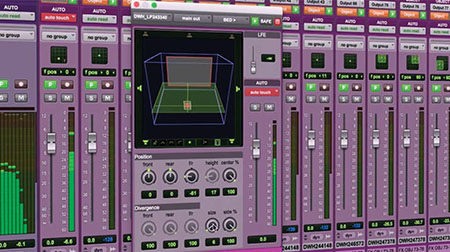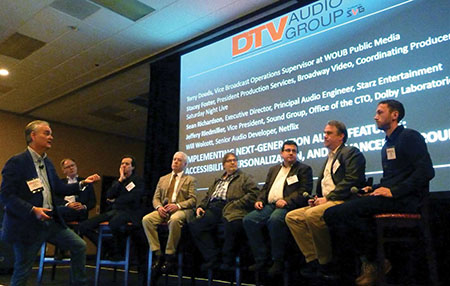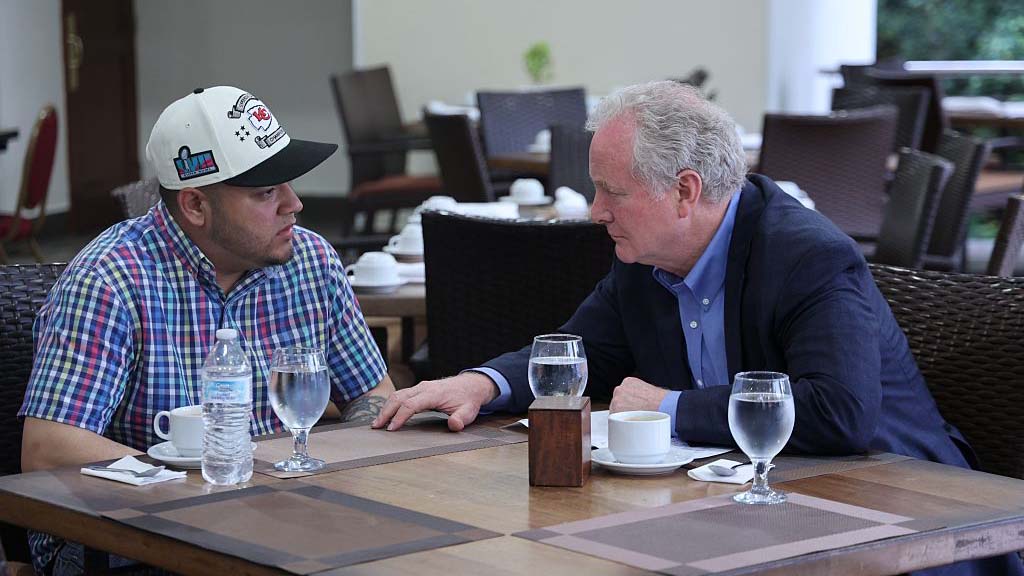Audio Education at the 2017 NAB Show
Every April, thousands of us make a pilgrimage to the desert to learn from gurus who pass along insight and direction, give us glimpses into the future, and help us make sense of it all. We learn to discern viable technology from the vapor versions, while balancing countless miles of walking with unhealthy amounts of sitting in uncomfortable chairs.
This year more than 100,000 of us journeyed to the NAB Show in Las Vegas to learn, catch up with colleagues and gawk at the newest, shiniest equipment from vendors.
In recent years, I’ve shifted focus from the gear toward the amazing number of learning opportunities that coincide with the NAB Show. Conferences, training classes and vendor-sponsored events kick into high gear the weekend before exhibits open. For me, that weekend is consumed by Avid Connect and the DTV Audio Group meeting.
AVID CONNECT
Avid Connect has become increasingly intriguing as the company works to implement the Avid Everywhere initiative announced at the inaugural event four years ago. Attendees get a far more in-depth look at new features than is possible at the NAB Show, as well as the opportunity to interact with product development teams.

Avid announced a number of new developments for Pro Tools at Avid Connect just before the NAB Show.
A number of positive announcements were made at this year’s event. First is that, sometime in Q2 of 2017, Pro Tools will gain multi-seat access to Avid’s Nexis storage, officially enabling multiple Pro Tools systems to share projects and stream audio from the same Nexis storage pool as editorial users.
Shared network storage is often an unsettling option for Pro Tools users because a server’s network connection can get congested with traffic from all the small audio files and waveforms the workstation uses.
During a session on centralized storage, it was mentioned that the Pro Tools and Nexis teams worked together to ensure that Pro Tools waveforms are now cached in a manner that keeps them from saturating the network.
Next up was the announcement of native Atmos support in Pro Tools HD along with the release of two Dolby Atmos software packages—welcome news to anyone concerned about the lack of available tools for immersive and object-based audio production.
The Atmos Production Suite can be downloaded directly from the Avid Store and contains the tools necessary to create Atmos content in Pro Tools. The suite includes three panners, the monitor application, a VR transcoder and the Atmos renderer, along with renderer send and return plug-ins.
The basic bed track format is 7.1.2, allowing two channels for overhead/upper speakers rather than the four specified in ATSC A/342, and up to 118 audio objects. Object busses auto-fold down when there is no renderer, though busses must be configured first.
Some additional items of note came from the session on Atmos workflows. Demos were run in a pre-release version of Pro Tools 12.9, which included an Atmos peripherals tab, the ability to show Objects in the Clips menu, and a menu choice to “Duplicate Atmos Plug-in Automation to Pan Automation,” which converts existing Atmos automation into the type used in the Production Suite.
Other features include the ability to pan between mix and object busses and improved stem rerecording capabilities. These Atmos-specific items are not present in Pro Tools 12.7.1 with the Production Suite installed, so they’re likely coming in an updated version of Pro Tools, though it’s also probable the new version will differ from what was shown at Avid Connect.
The second software package, the Dolby Atmos Mastering Suite, is intended for DVD/Blu-ray mastering and consumer end-product creation and is available only from retailers. It requires either a Dolby RMU or the hardware equivalent of an RMU.
THE DTV AUDIO GROUP
The DTV Audio Group meeting is an afternoon spent gleaning important information from people who are driving change in the industry. Kicking things off this year was Thomas Edwards of Fox Networks, with an update on IP video. He showed how SMPTE IP standards are jelling into the SMPTE ST 2110 media-over-IP standard, with AES67 chosen as the PCM linear audio stream format for ST 2110-30.

The DTV Audio Group covered a range of next-gen audio developments.
Edwards noted that ST 2110 requires zero offset start times for AES67 streams and that the 2110-31 AES3 nonlinear transport is far from sorted out, so input from professional audio organizations is being sought. He concluded with a discussion of discovery protocols, noting that NMOS IS-04 would likely be the discovery and registration protocol used in ST 2110.
Next up was Kevin Gross of AVA Networks with an update on AES67, describing how it fits into the family tree of professional open standards. Responding to Thomas’ earlier comments, he pointed out that AES67 does not require zero offset streams because random offsets are more secure, but that in fact, many AES67 devices already use zero offsets. So compliance for ST 2110 is certainly doable.
Kent Terry from Dolby Labs delved into “Audio Metadata in Live IP Streams,” specifically addressing ST 2110-31 and offering KLV metadata as a potential solution.
Results and implications of the wireless spectrum auction were covered by Jackie Green, president of Alteros, who stated that devices using the 600 MHz frequency band must go quiet soon. Theoretically, they may be used for 39 months after the auction close date, but in reality all usage must cease as soon as the auction winner begins testing devices.
Rob France from Dolby explained Atmos production techniques used for the National Premier Soccer League, including creating 5.1.4 beds using Soundfield microphones. A progress update on AES audio guidelines for OTT was led by Jim Starzynski of NBC, followed by a recap of audio production at the Rio Olympics and a preview of the AoIP-heavy audio design for the forthcoming Pyeongchang games from Karl Malone, also of NBC. The meeting wrapped with a lively panel discussion on Next Generation Audio production.
Between the Pro Tools Atmos software announcements and news of the upcoming SMPTE ST 2110 media-over-IP standard with its inclusion of AES67, the weekend was, as usual, both informative and time well spent.
Jay Yeary is a broadcast engineer and consultant who specializes in audio. He is an AES Fellow and a member of SBE, SMPTE and TAB. He can be contacted through TV Technology magazine or attransientaudiolabs.com.
Get the TV Tech Newsletter
The professional video industry's #1 source for news, trends and product and tech information. Sign up below.
